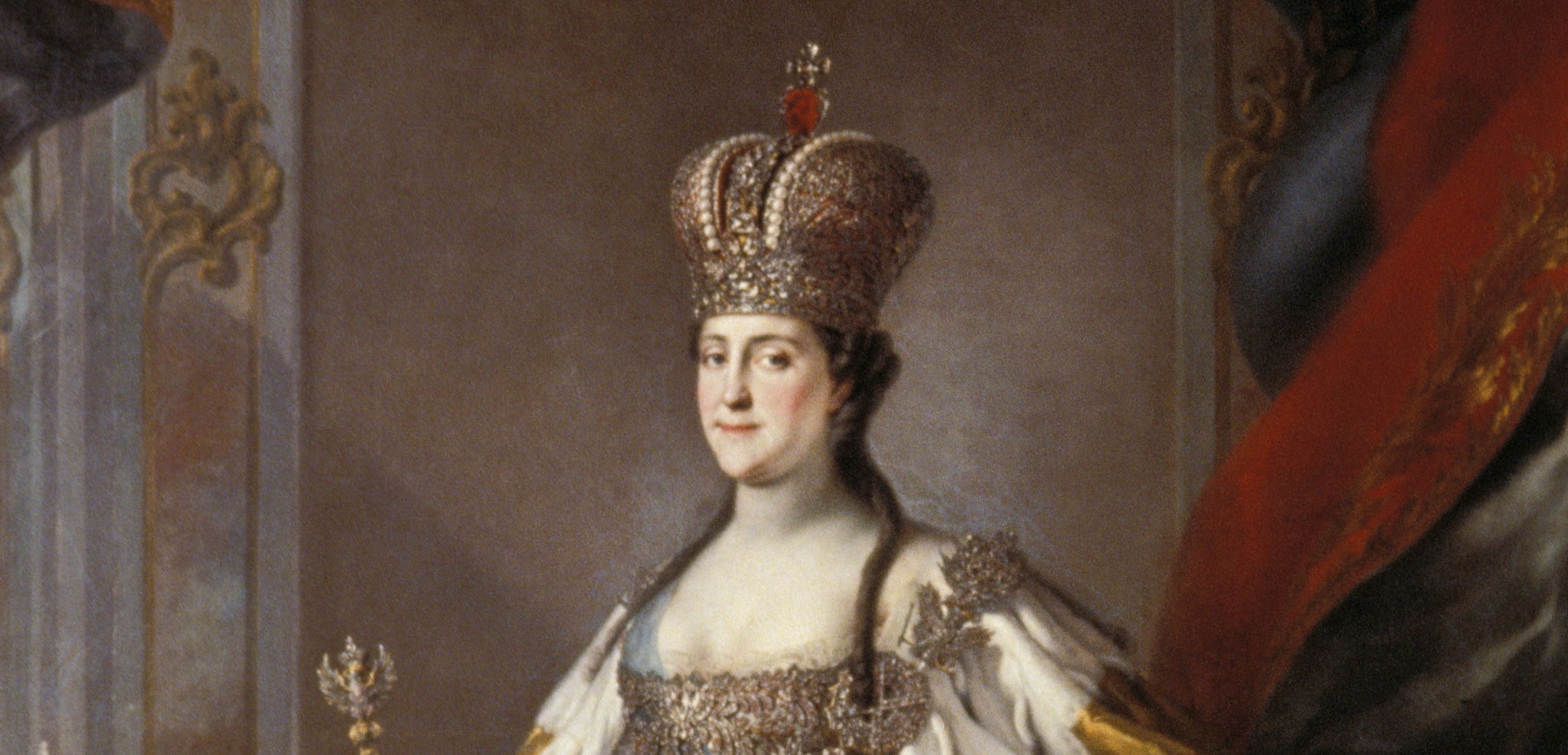Catherine the Great of Russia
17 November, 2021 - 225th anniversary of her death
16 November 2021

Derided both in her day and in modern times as a hypocritical warmonger with an unnatural sexual appetite, Catherine the Great, was a woman of contradictions whose brazen exploits have long overshadowed the accomplishments that won her “the Great” moniker in the first place.
Ruler of Russia from 1762 to 1796, Catherine championed Enlightenment ideals, expanded her empire’s borders, spearheaded judicial and administrative reforms, promoted vaccination, curated a vast art collection that formed the foundation of one of the world’s greatest museums, exchanged correspondence with Voltaire and Dennis Diderot, founded the country’s first state-funded school for women, drafted her own legal code and started a national system of education. Born Princess Sophie of Anhalt-Zerbst in Prussia in 1729, she came from an impoverished aristocratic family whose bargaining power stemmed from its noble connections. Thanks to these ties, she soon found herself engaged to the heir to the Russian throne: Peter, nephew of the reigning empress, Elizabeth, and grandson of another renowned Romanov, Peter the Great.

Upon arriving in St. Petersburg in 1744, Sophie converted to Eastern Orthodoxy, adopted a Russian name and began learning to speak the language. The following year, the 16-year-old wed her betrothed, officially becoming Grand Duchess Catherine Alekseyevna.The couple’s loveless marriage afforded Catherine ample opportunity to pursue her intellectual interests, from reading the work of Enlightenment thinkers to perfecting her grasp of Russian.
Catherine came to power following a coup d'état that overthrew her husband Peter III. Aided by her lover Grigory Orlov and his powerful family, she staged a coup just six months after her husband took the throne. The bloodless shift in power was so easily accomplished that Frederick the Great of Prussia later observed, "(Peter) allowed himself to be dethroned like a child being sent to bed.”
In her accession to power and her rule of the empire, Catherine often relied on her noble favourites, most notably Count Grigory Orlov and Grigory Potemkin, who were also her lovers. Catherine began as a political and social reformer but gradually grew more conservative as she got older. After the Pugachev Rebellion of 1774-1775, Catherine realised her heavy reliance on the nobility to control the country and instigated a series of reforms giving them greater control over their land and serfs. The 1785 ‘Charter to the Nobility’ established them as a separate estate in Russian society and assured their privileges. Catherine therefore ignored any concern she may previously have had for the plight of the serfs, whose status and rights declined further.
Catherine died in St Petersburg on 17 November 1796 and was succeeded by her son Paul.
